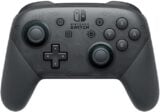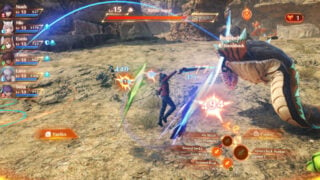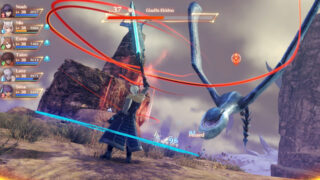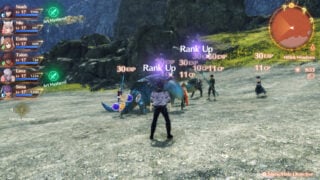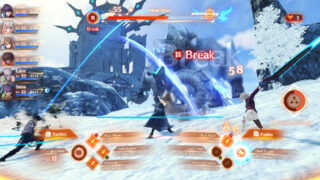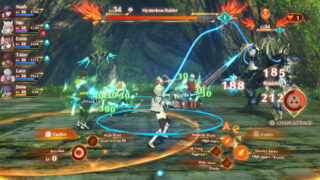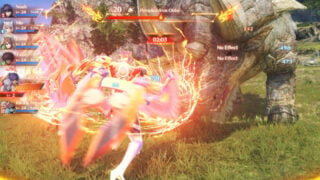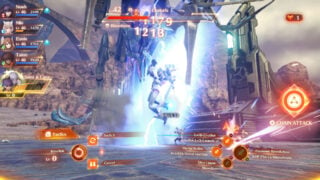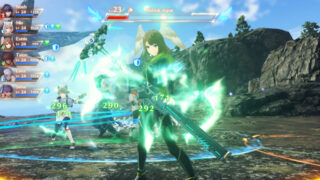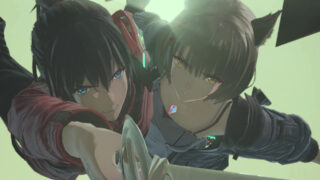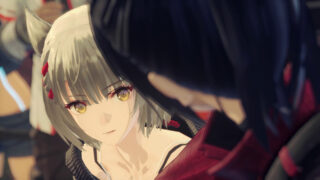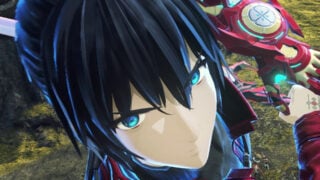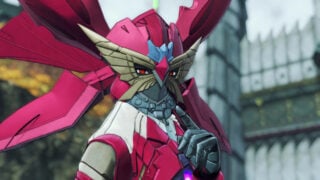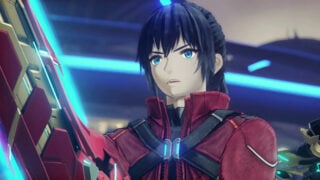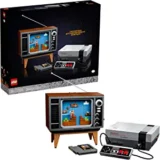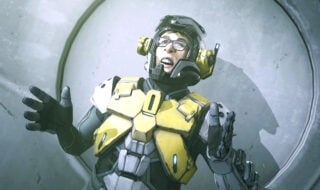Hands-On: Xenoblade Chronicles 3 boasts Monolith Soft’s classiest combat yet
Monolith combines the best of the Xenoblade series into a Switch adventure with huge potential

A few hours with Xenoblade Chronicles 3 reveals a collision of everything that came before – classic sequel-making of the bigger, bolder, better school.
But while that’s all very exciting and covered in due course, the really pertinent question fans will be asking is this: “What battle cry will be stuck in my head this time?”
For all of Xenoblade’s myriad qualities, it’s the series’ repetitive audio barks we think of first. “It’s Reyn time!” “What a bunch of jokers!” “[Heavy Welsh accent] Falcon turn!” If there’s an audio equivalent of screen burn, these quotes are it, ringing in ears for eternity.
Update - Xenoblade Chronicles 3 review
We’ve published our full Xenoblade Chronicles 3 review.
“Xenoblade Chronicles 3 delivers a massive world, and more than enough story and character to fill it, combined with the series’ most reactive combat system to date. While certainly a monster commitment, Aionios is an incredible place to live for a month or two.”
Joining them in the third game? The current contender is “What were they going to do? Make me yawn myself to death?” said by Lanz, who is the game’s answer to Reyn – another loyal lunkhead, sucking up pain as only a tank can.
There are many more voices competing in the sound mix. The party is bumped from the standard three to six, with a seventh spot for a hero NPC offering extra back-up. That’s seven mouths all bellowing colourful move names, encouraging barks and victorious boasts.
Some might hear a cacophony, but for a returning fan it’s the perfect metaphor for how this JRPG behaves – it’s never been about warriors politely waiting for their turn, but all-out assault. Everyone, everything, all at once.
And even more so in part three, a game that smushes together the best of Xenoblade Chronicles 1 and 2. As always, you control one party member, moving in real-time and auto-attacking until you activate special ‘arts’. As to how those function, Xenoblade Chronicles 3 draws inspiration from different games depending on which character you play as.
The party consists of fighters from two rival nations. In Keves, home to protagonist Noah, arts charge over time, as in the first game, while Agnian soldiers fuel theirs by landing hits, a la Xenoblade Chronicles 2.
“It’s never been about warriors politely waiting for their turn, but all-out assault. Everyone, everything, all at once.”
In time every hero learns to juggle arts from both nations, and they’re brought further together by a combo system lifted from the second game. Activating arts just as auto attacks land quickly triggers the move and lets you chain together combos, which in turn powers up heftier moves and quickens the recharge of Agnian arts.
Put more simply – timing attacks causes everything to hit faster and harder. It’s what gave Xenoblade Chronicles 2 more urgent combat over the original, and the trick works just as well here.
But on top of that you have classes, broadly split into attack, defence and healing, but each with a twist that gives the class a specific feel in combat. This channels the first game, and the way it asked you to master specific behaviours for each playable hero.
Here, for example, a healer physically legs it round the battlefield planting healing or attack-boosting circles under the feet of those that need them, while attackers target directional weak spots to stagger huge foes.
In the long run, the classes might prove the defining feature of Xenoblade Chronicles 3. By switching roles between battles you can easily recalibrate the party to counter a specific challenge – adding to the defender count if you need to divide the attention of multiple soldiers, say, or negating a boss’s huge area-of-effect attacks with additional healers to spread the burden.
And that’s just playing with prescribed roles. Start mixing class arts and all manner of bespoke cleverness emerges.
If all this is hard to visualise, know that A) the game does an exceptional job of drip feeding the basics over its first few hours, and B) comes with a suite of great training drills that let you dig into advanced moves step by step.
And what it amounts to in minute-to-minute action is a system that rewards you as a sole fighter – just timing those attacks and milking class-specific moves are enough to keep you busy – but has those actions feed into devastating team powers.
The only one we can mention here are Ouroboros forms, which are large mech-y suits that fuse pairs of heroes together. Think of a miniature Power Rangers Megazord, only you can have three at a time, drawn from your pool of six.
“In the long run, the classes might prove the defining feature of Xenoblade Chronicles 3.”
At the outset, they are flashy but a little cumbersome, only allowing a couple of moves before they overheat. But, as with so much of Xenoblade Chronicles 3, they blossom in ways best left for you to discover.
The trickiest bit of talking about the game is that a lot of what happens in the first few hours is just laying basic building blocks for some truly outlandish stuff later. Series fans will know that Xenoblade Chronicles 2 and its excellent expansion were still introducing new ideas right up until the final boss fights.
Discovering those power curves, and how heroes can always dig a little deeper into some untapped anime potential, is a huge part of the series’ appeal.
What is instantly striking from the outset is a shift in tone towards something a bit more grounded and soulful. Forget wide-eyed innocents drawn into villainous plots, the six heroes here are teens bred specifically for an unending war.
Worse, they have a shelf life of ten years. Even if you survive the battlefields, their body clocks – represented as a gradually depleting birthmark – are ticking. So even with an uneasy peace struck between two rival squads, the future is hardly bright.
Perhaps some will find the muted, militaristic edge a buzzkill after the cheery adventures of old, but it does lighten up (even in these early hours) as our six learn to tolerate each other. The sense of mortality also adds a welcome vulnerability to a genre too often dominated by aloof demigods.
That party lead Noah serves as a battle priest, sending off the souls of the deceased with a flute solo, means it even makes a sidequest of its spirituality, as you hunt corpses to sanctify.
And if your days in the world are numbered, it’s at least a pretty world to spend them in. Like its predecessors you’ll find vast biomes full of free-ranging monsters, ranging from low level fodder all the way up to level 80 endgame brutes.
And like those earlier games it strikes that balance of having enough scale to draw you in ten interesting directions at once, but without spilling into empty vastness. And while we’re no Digital Foundry, to our eyes it’s a big step up in quality over Xenoblade Chronicles 2. It even looks swish in handheld mode, which was notoriously soft in previous entries.

If there’s a tiny disappointment it’s that, at this early stage, the world lacks the killer hook of the previous games’ on-the-shoulders-of-giants art design. There the worlds sprouted from the bodies of vast titans; this is a more conservative landmass that leads from wasteland to grassland to environs beyond.
They impress in their individual scale and geological oddness, but we’re yet to feel the lip-wibble of wonder that comes from glimpsing some vast body towering above. Of course, there’s still plenty of game for that world to emerge in and so much more than can be covered at this preview stage.
Crucially, everything is here that you’d want from a Xenoblade – Nopons, British regional accents and killer boss themes with key changes to die for – and plenty to suggest this will escalate just as deliciously as those previous journeys.
So, are we going to “yawn ourselves to death”? Not likely, no matter how much Lanz insists.
